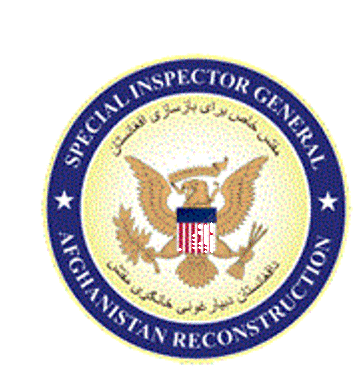KABUL (Pajhwok): US Special Inspector General for Afghanistan Reconstruction (SIGAR) in its latest report has said that security remains the most crucial and enduring high-risk area because the Taliban have not significantly changed their tactics.
The report says high levels of violence, or political objectives, and terrorist groups in Afghanistan like Islamic State-Khorasan (IS-K) and al-Qaeda, although reduced, remain in the country.
Each quarter since the US-Taliban agreement was signed (April–June, July–September, and October–December 2020) has seen a higher average number of enemy-initiated attacks compared to the same quarters in 2019.
The High-Risk List identifies serious risks to the United States’ $143 billion reconstruction effort in Afghanistan.
The report says with or without a sustainable peace agreement and nationwide ceasefire, Afghanistan will likely continue to be threatened by multiple violent-extremist organizations.
It said any political agreement risks subordinate groups going rogue, possibly manifesting as another insurgency or insecurity from criminal gangs or networks.
These issues could become even more pronounced if US forces are no longer in country to provide counterterrorism support and to train, advise, and assist Afghanistan’s security institutions.”
Women’s rights:
Overall, the report says, a long-term danger for Afghan women is that Afghan peace negotiations break down, plunging the country into worse violence.
Physical insecurity remains one of the biggest challenges facing women, both directly and indirectly.
The report says the Taliban have 55,000–85,000 fighters, according to the United Nations. Depending on the terms of a peace agreement, some Taliban fighters will be integrated into the Afghan National Defense and Security Forces; others will need to transition to productive noncombatant status in civil society.
Several factors could undermine Afghanistan’s reintegration efforts, including: a weak economy that currently offers few sustainable livelihood options; ongoing insecurity; political uncertainty; poor social cohesion within a population traumatized by decades of war; and weak governance and rule of law.
Foreign aid:
Donor grants totaling at least $8.6 billion per year (covering both security and civilian assistance) currently finance almost 80 percent of Afghanistan’s $11 billion in public expenditures (estimates for total on-budget and off-budget assistance).
The report said Afghanistan remains exceptionally reliant upon foreign assistance, creating both an opportunity for donors to influence events there as foreign troops depart and risks to a potential peace if they reduce assistance too much, too fast, or insist on conditions that cannot be achieved by the parties to the conflict.
US reconstruction programs may become the primary lever of US influence in the country for stability and a negotiated peace.
Future funding for Afghanistan faces two principal risks: (1) whether expanding the conditions donors set for funding will be sufficient incentive to facilitate and maintain an acceptable peace agreement and; (2) whether the level of foreign assistance during this uncertain period is sufficient to prevent state collapse.
The deleterious effects of the illicit narcotics trade in Afghanistan extend beyond health impacts. It also helps fund insurgents, foster corruption, and provoke criminal violence.
The failure to effectively address systemic corruption in Afghanistan means that US reconstruction programs, at best, will be subverted, and at worst, will fail.
The Afghan government has taken limited steps to curb systemic corruption, but more tangible action is required.
As the US military and agency footprints in Afghanistan shrink, it will become increasingly important that the US and other donors perform aggressive and effective oversight by insisting that funding agreements include measurable and verifiable benchmarks with tangible outcomes; periodic reassessment of funding goals and Afghanistan’s needs; high-level political buy-in from US, Afghan, and international officials; and full and unfettered access to on-budget funding flowing through Afghan government ministries.
pr/ma
Visits: 263









GET IN TOUCH
NEWSLETTER
SUGGEST A STORY
PAJHWOK MOBILE APP